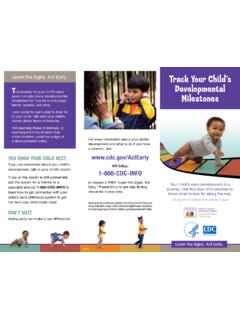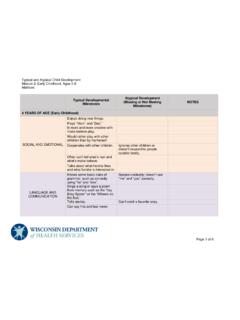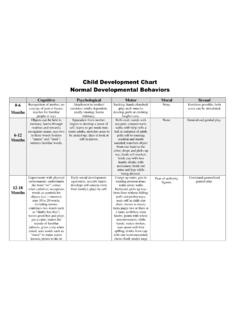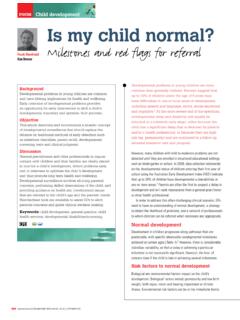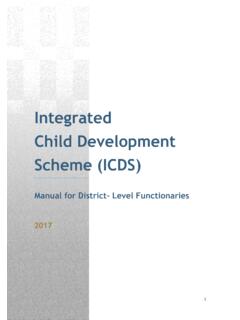Transcription of SEMANTIC DEVELOPMENT MILESTONES - Crown Pediatric …
1 SEMANTIC DEVELOPMENT MILESTONES semantics is the understanding of word meanings and the relationships between words. Children s SEMANTIC DEVELOPMENT is a gradual process beginning just before the child says their first word and incudes a wide range of word types. A 1 year old can: Name some common objects Follow simple one-step directions Identify some body parts Answer basic yes/no questions Understand some locations words ( , in, on) Understand simple what, where and who questions A 2 year old can now also: Understand a variety of word types ( , nouns, verbs, pronouns, prepositions, etc.)
2 Understand some simple concept terms ( , big/little) Begin to follow simple two-step directions Include basic emotions words in vocabulary ( , sad, happy, mad) Understand some basic grammatical markers ( , -ing, plural s) A 3 year old can now also: Name parts of objects ( , wheels, door handle, etc.) Sort objects into categories ( , foods, animals, clothing, etc.) Identify items that are the same or different Understand exclusionary term not ( , find the hat that is not blue) Use some shape, colour, letter and number words A 4 year old can now also.
3 Describe the function of common objects ( , chair is for sitting, car is for driving) Describe differences and similarities between objects Provide common antonyms ( , wet vs dry) and synonyms ( , fast and quick) Identify things that go together ( , ball and bat, fork and spoon) from a small group of items Describe an object using 3 or more adjectives ( , size, shape, texture, appearance, etc.) A 5 year old can now also: Sort items based on different categorization qualities ( , items that move, come from a farm, living vs non-living, etc.) Use a growing variety of words based on personal interests and experiences ( , musical terms, sporting words, cultural customs, etc.)
4 Understand temporal concepts ( , before, after, yesterday, today, tomorrow) Provide simple definitions for some known words ( , genius means someone who is really smart) Use past knowledge to help them understand new word meanings A 6 year old can now also: Name categories and subcategories ( , Clothing winter items) Describe an item with four or more terms ( , category, parts, description, place of origin, etc.) Identify less obvious differences and similarities between objects ( a bike is different from a motorcycle because one has an engine and the other you pedal) Understand superlatives ( , big, bigger, biggest) Understand more conjunction words ( unless, so, while, since, etc.)
5 Understand ordinal position ( , first, second, third, fourth, etc.) For more information visit

